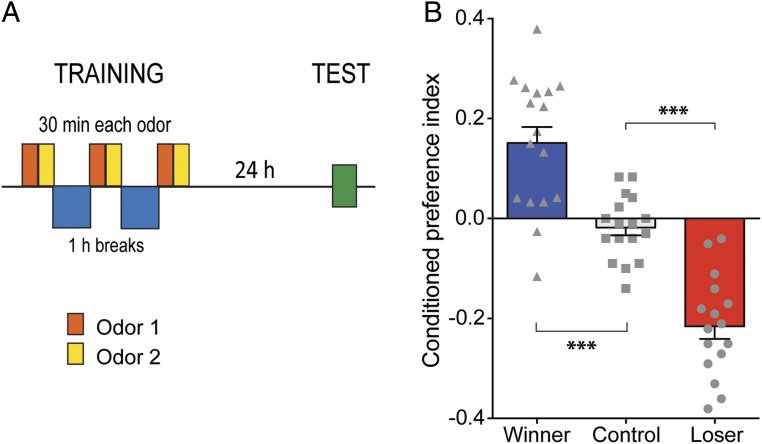Fig. 2.
Valence of the winning and losing. (A) Naive SH CS males were trained to associate a particular fighting experience with an olfactory cue in three sessions, each consisting of a 30-min exposure to odor 1 (without opponent) followed by a 30-min exposure to odor 2 paired with the presence of an opponent fly: hypoaggressive male opponents were used to generate winners and hyperaggressive opponents were used to generate losers. New opponents were used in each training session. Flies were given a 1-h rest between sessions, and the memory tested 24 h after the end of training. Control flies were exposed to the two olfactory cues in the absence of opponents. (B) Compared with control flies (n = 17 experiments with groups of 24 males each), winners showed a conditioned preference (n = 17; ***P < 0.001), whereas losers showed a conditioned aversion (n = 16; ***P < 0.001) for the odor previously associated with the respective fighting experience. One-way ANOVA followed by Tukey’s multiple comparisons test.

